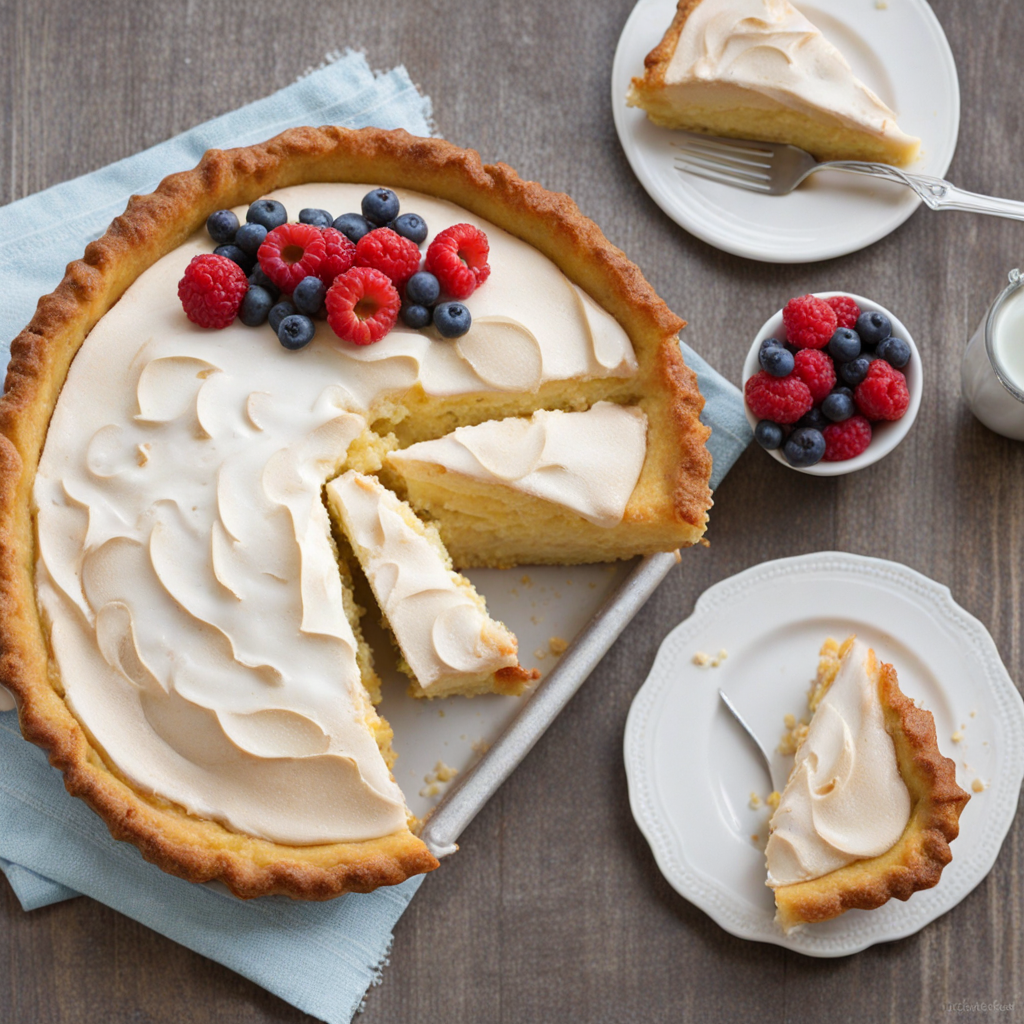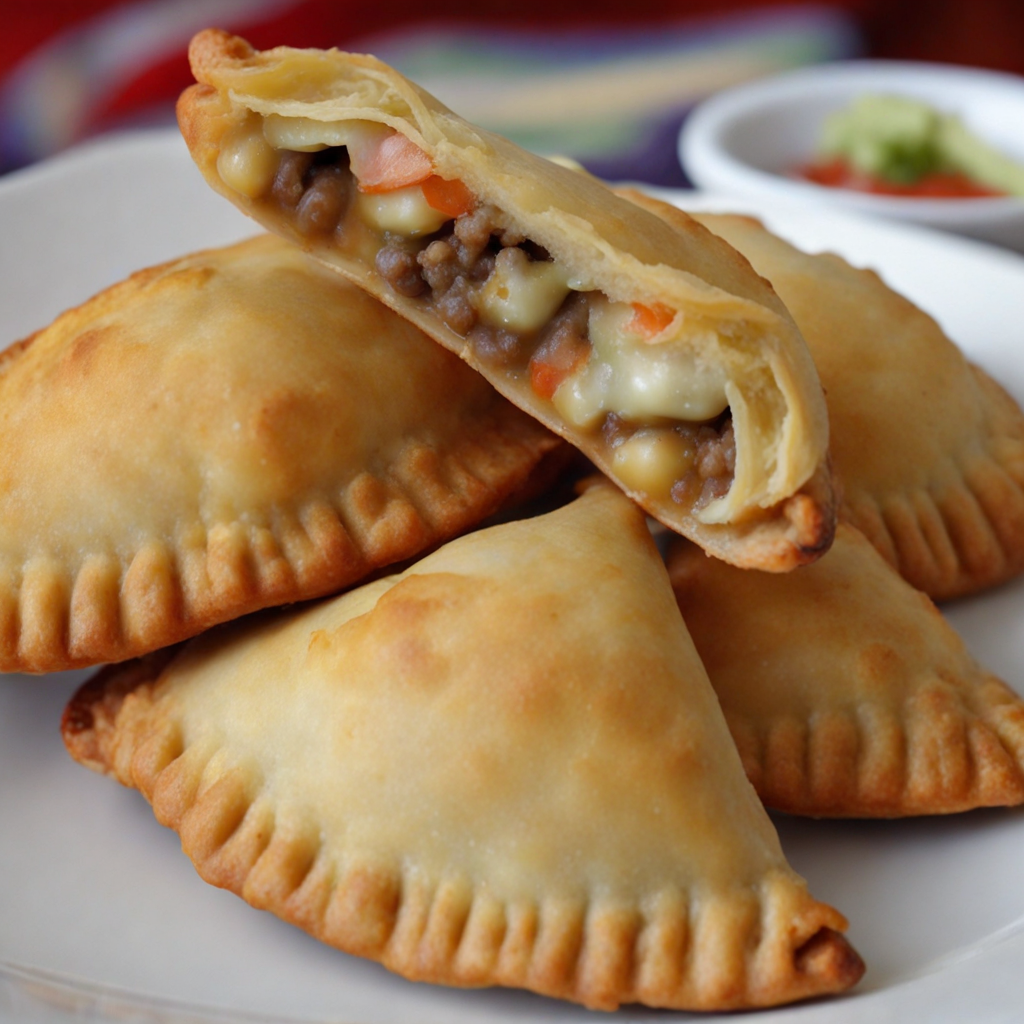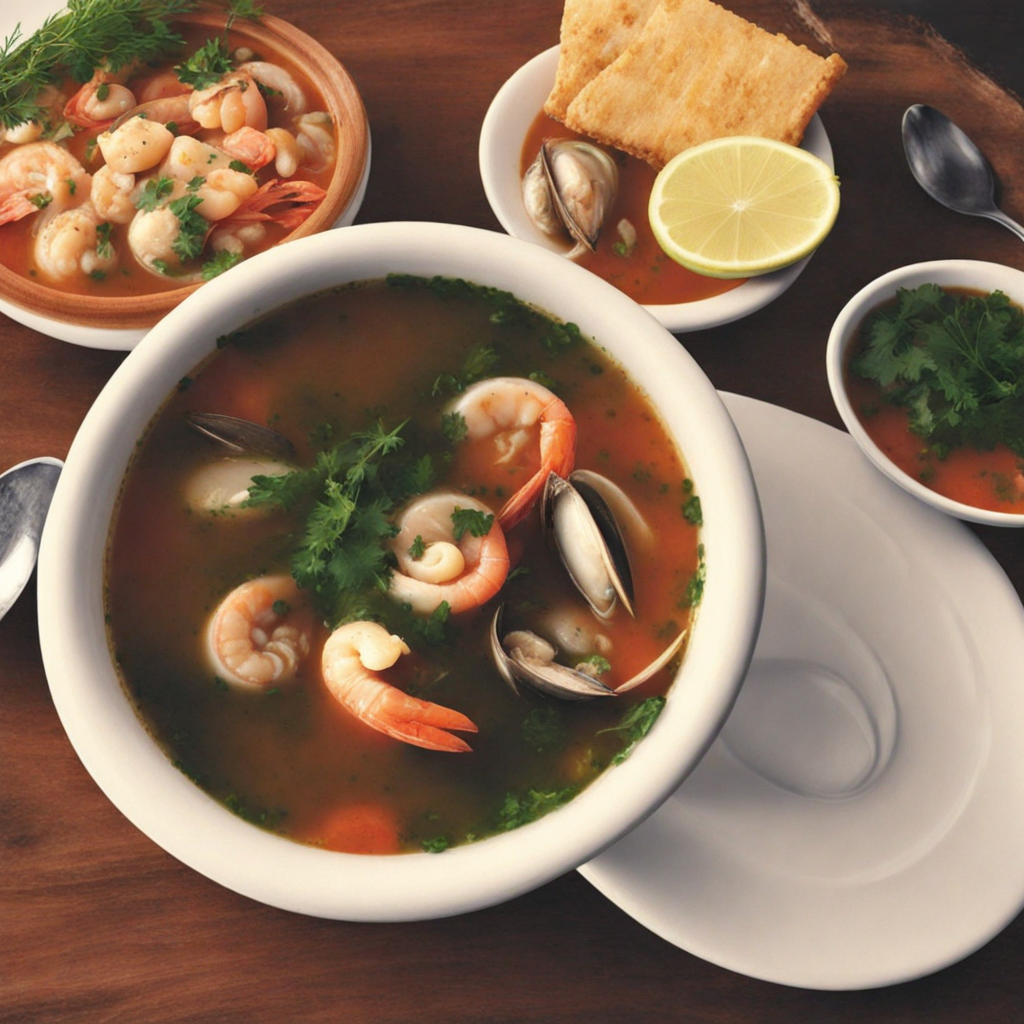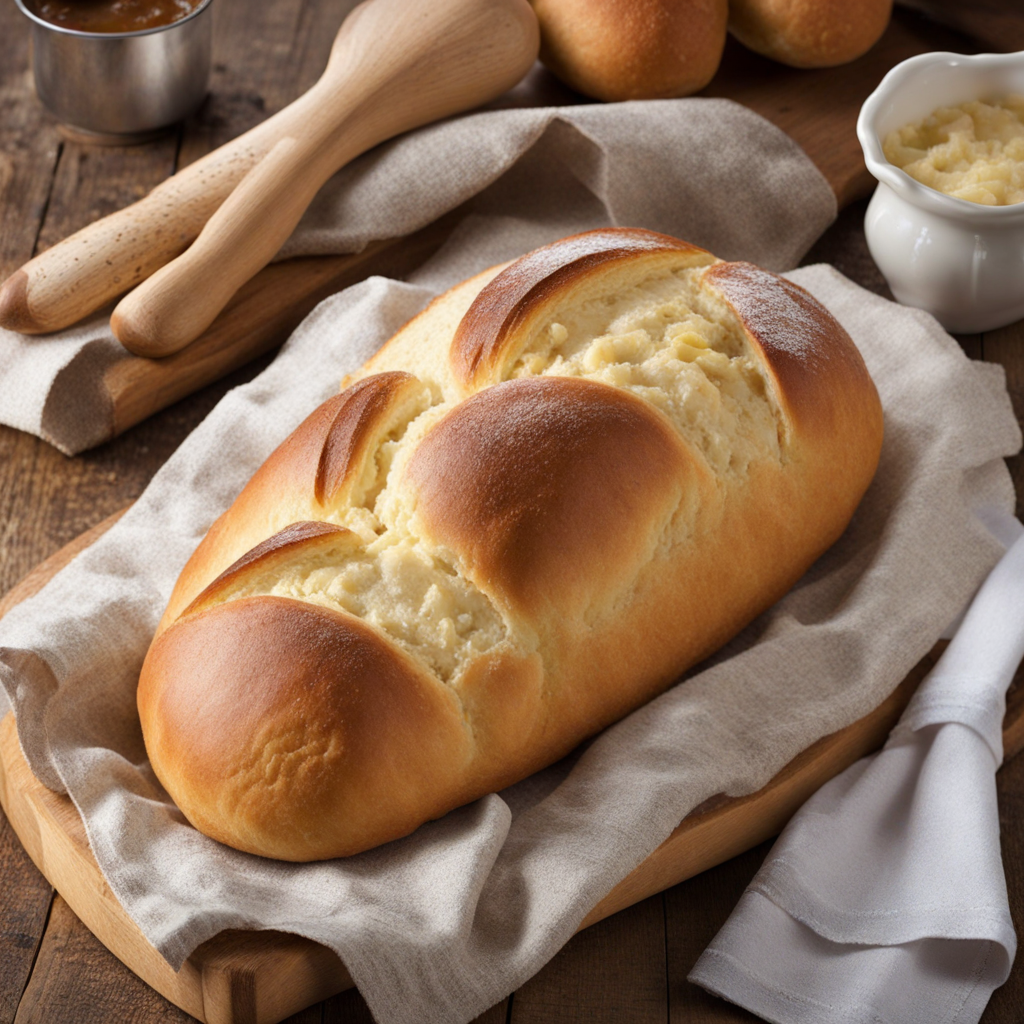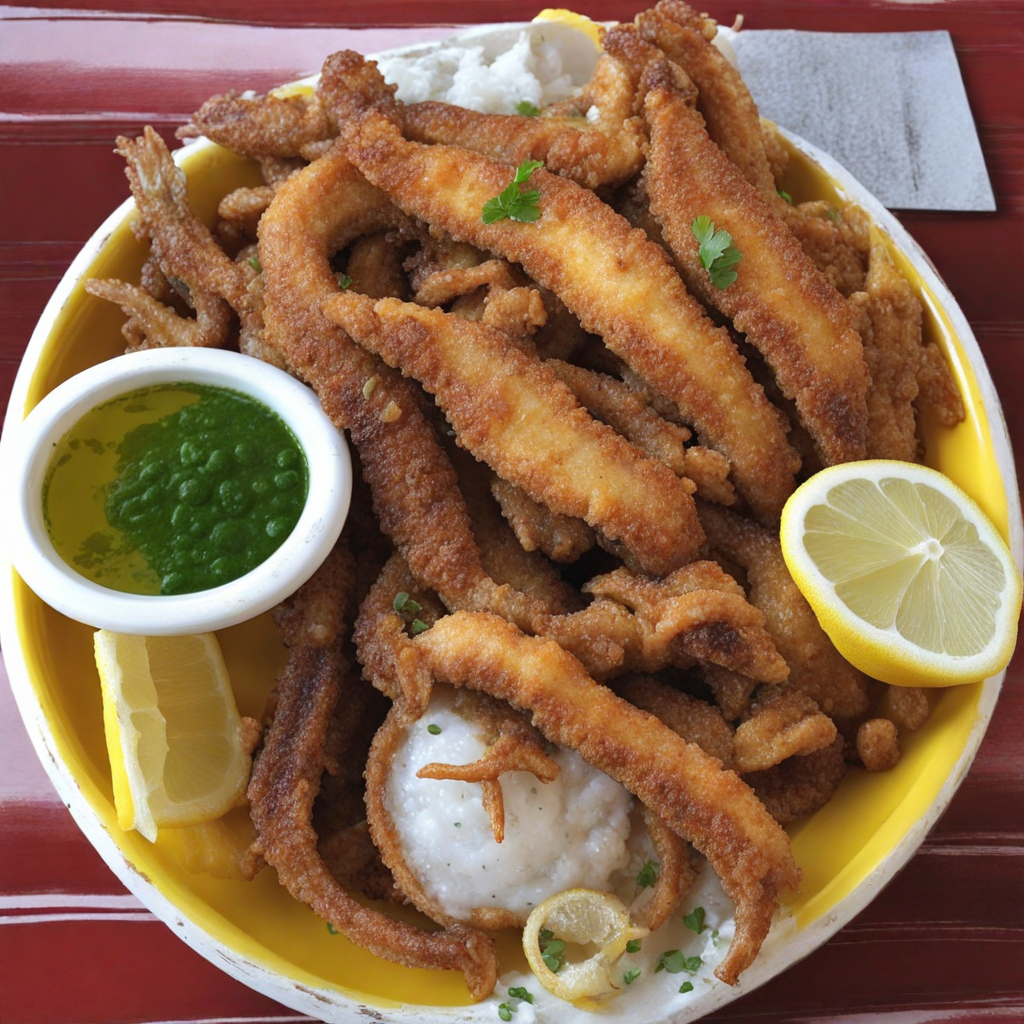Kuchen
Kuchen is a delightful dessert that reflects the rich cultural tapestry of Chile, blending indigenous ingredients with European baking traditions. Originating from the German settlers who migrated to the southern regions of Chile, this cake has evolved into a beloved staple that can be found in many homes and bakeries. The texture of Kuchen is typically light and fluffy, often resembling a cross between a cake and a tart, making it a versatile treat that can be enjoyed at any time of day, whether as a breakfast item or an afternoon snack with coffee. The beauty of Kuchen lies in its variety; it can be made with an array of fillings, including fruits such as apples, berries, or cherries, which are often sourced from the lush valleys of Chile. The fruit is usually combined with a sweet batter, creating a harmonious balance of flavors. Some variations incorporate a crumbly streusel topping, adding a delightful crunch that contrasts beautifully with the soft interior. The use of local ingredients, such as nuts and spices, gives each Kuchen a unique taste that showcases the region's bounty and culinary heritage. The aroma of a freshly baked Kuchen wafting through the kitchen is inviting and comforting, a sensory experience that beckons to be savored. Served warm or at room temperature, this delightful cake pairs wonderfully with a dollop of whipped cream or a scoop of ice cream, enhancing its indulgent nature. Whether you are enjoying a slice at a local café or baking it at home, Kuchen offers a sweet escape into the flavors of Chile, making it a must-try for anyone looking to explore new culinary horizons.
How It Became This Dish
Kuchen: A Sweet Slice of Chilean Heritage Kuchen, a delectable treat that graces the tables of many Chileans, is a cake that encapsulates the rich tapestry of the country’s history and culture. The origins of Kuchen can be traced back to the German immigrants who settled in the southern regions of Chile in the 19th century. Their arrival, particularly in the area of Valdivia, introduced not only their language and customs but also their culinary traditions, which would ultimately influence the national palate. Origins of Kuchen The word "kuchen" itself is derived from the German term for "cake." German settlers brought with them various recipes and methods for baking, which included techniques for making fruit-based desserts and pastries. The introduction of these recipes coincided with the abundance of local ingredients available in Chile, especially the rich array of fruits such as apples, berries, and peaches. These fruits became the perfect complements to the German-style cakes, leading to the evolution of what we now recognize as the Chilean kuchen. The first kuchen recipes were simple, reflecting both the ingredients available and the tastes of the settlers. Over time, these recipes began to blend with indigenous and Creole culinary traditions, creating a unique fusion that characterizes Chilean cuisine. The use of local fruits, nuts, and spices in combination with traditional German baking techniques laid the groundwork for the diverse array of kuchen varieties that can be found today. Cultural Significance Kuchen holds a special place in Chilean culture, often serving as a symbol of hospitality and community. It is a staple at family gatherings, celebrations, and festive occasions. In many households, the preparation of kuchen is a communal activity, where family members come together to bake, share stories, and create lasting memories. The act of making kuchen is not just about baking; it is an expression of love and tradition, passed down through generations. In the southern regions of Chile, particularly in areas like La Araucanía and Los Lagos, kuchen has become an integral part of local identity. The cake is often featured at fairs, markets, and community events, showcasing the rich cultural heritage of the area. In fact, towns such as Frutillar and Puerto Varas celebrate their German roots through festivals that highlight traditional foods, including kuchen, drawing visitors from across the country and beyond. Development Over Time As Chilean society evolved, so too did kuchen. While the original recipes were heavily influenced by German techniques, they gradually adapted to the local context. The introduction of new ingredients and flavors led to the emergence of various regional styles of kuchen. For instance, some kuchen are made with a sweet pastry crust, while others may feature a sponge cake base, reflecting the versatility of the dish. Kuchen is not limited to a single flavor profile; it has expanded to include a plethora of variations. The most traditional types often include apple kuchen, which combines tart apples with a sweet, buttery batter. Berry kuchen, made with local berries such as blueberries and blackberries, showcases the fresh produce of the region. Another popular variant is the "kuchen de nuez," or walnut cake, which incorporates the rich, nutty flavor of walnuts, often combined with chocolate or caramel. In recent years, the globalization of food culture has led to an increased interest in kuchen beyond Chile’s borders. Chefs and home bakers alike have begun to experiment with this traditional cake, introducing new flavors and modern techniques while still respecting its roots. For example, some bakers have embraced gluten-free or vegan adaptations of kuchen, allowing more people to enjoy this beloved dessert. Furthermore, kuchen has found its way into the culinary spotlight in various settings, from contemporary cafés to upscale restaurants, where it is often served alongside specialty coffees or artisanal teas. This evolution reflects a broader trend in Chile, where traditional foods are being reimagined to cater to modern tastes while still honoring their origins. The Future of Kuchen As we look to the future, kuchen continues to be a living tradition in Chile. It serves as a reminder of the country’s diverse heritage and the blending of cultures that has shaped its culinary landscape. The celebration of kuchen at local festivals and events ensures that it remains a vital part of community identity and heritage. In addition, as culinary tourism grows in popularity, more travelers are discovering the joys of kuchen. Food enthusiasts are seeking out authentic experiences, often participating in cooking classes or culinary tours that highlight traditional Chilean baking. These experiences not only promote kuchen but also facilitate cultural exchange, allowing visitors to appreciate the stories and traditions that accompany each slice. Moreover, the rise of social media has given kuchen a new platform for visibility. Home bakers and professional chefs share their creations online, showcasing the beauty and variety of kuchen to a global audience. This digital presence fosters a renewed interest in traditional recipes, encouraging younger generations to engage with their culinary heritage. Conclusion Kuchen is more than just a cake; it is a symbol of Chile's rich cultural history, a testament to the resilience and creativity of its people. From its German roots to its contemporary interpretations, kuchen continues to evolve while remaining deeply woven into the fabric of Chilean life. As it graces tables across the country, it invites us to celebrate not only the sweetness of life but also the communal bonds that food fosters. In every bite of kuchen, one can taste the history, the love, and the enduring spirit of a nation that cherishes its culinary heritage. Whether enjoyed in a bustling café or shared among family at a special occasion, kuchen will always be a cherished part of Chile’s gastronomic identity, promising to continue delighting palates for generations to come.
You may like
Discover local flavors from Chile


